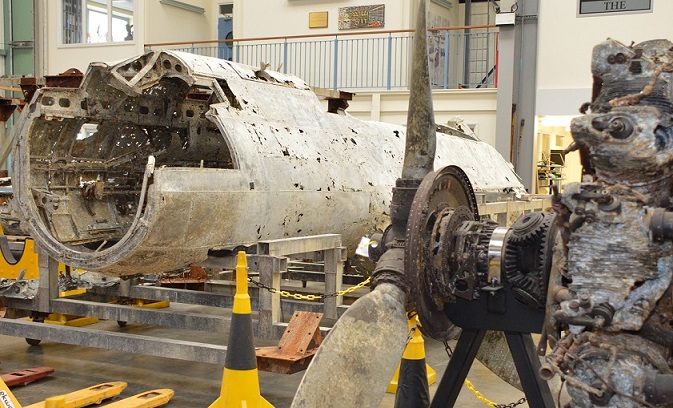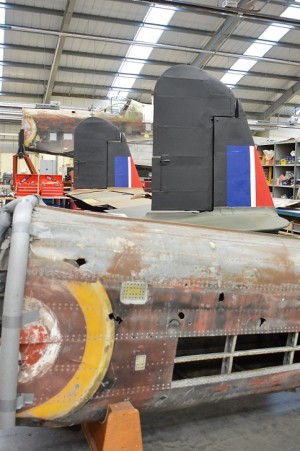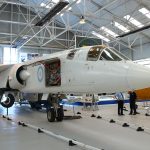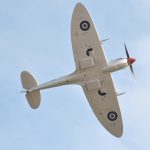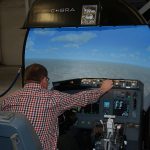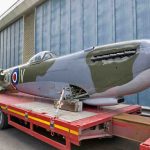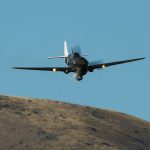PRESS RELEASE – Next month, the Michael Beetham Conservation Centre at the Royal Air Force Museum Cosford will be opening its doors, allowing Museum visitors behind the scenes access to aircraft conservation projects and the chance to speak with the team who make them happen. From 9-14 November visitors will be able to get up close to all of the current conservation projects undertaken by the team at Cosford, which include much more than just aircraft…. The Range Safety Launch (RSL) 43ft boat, number 1667 is one of the centre’s longest running projects and demonstrates the diversity of the role played by the Royal Air Force in protecting our nation.
With four crew members and a top speed of 20 knots, RSL 1667 saw service in the Far East based out of RAF Seletar, Singapore. Whilst in Singapore, the boat was painted in tropical white livery and operated in support of RAF Shackletons and helicopters based at nearby RAF Changi on Search and Rescue in target towing, sonar practice and weapon recovery duties. In the 1960’s it was used to tow Sunderland’s to mooring buoys and transfer passengers to and from the aircraft. Allotted back to the UK in 1970, the boat spent a further 11 years based on the South Coast of England before its withdrawal from service in 1981 when it was purchased by a private owner.The RAF Marine Branch formed in 1948 and grew out of the Air Sea Rescue Service which proved invaluable in saving the lives of downed aircraft during World War Two. Part of the duties of the Marine Branch was to support the RAF’s marine bombing ranges and it was to fulfill this requirement that twenty seven 43ft Range Safety Launches were ordered. The Museum’s example was manufactured by Groves and Gutteridge at Cowes, Isle of Wight in 1956 and donated by a private owner in 1996.
The majority of the conservation work on RSL 1667 has been carried out by Museum Volunteers. Work completed to date includes the restoration of the wheel house including the instrument panel and controls. The next steps will see the engine bay having its surface finish restored and the steering gear rebuilt and back operational.It’s been a busy twelve months since visitors last passed through the doors of the Conservation Center. Significant progress has been made to another of the center’s long term conservation projects, the Handley Page Hampden and regular visitors are sure to be astounded by the developments being made.
RAF Museum Conservation Center Manager, Darren Priday said:“The Hampden’s tailplane, fin and rudder have been fully restored, with new fabric and new paint work. Technicians have incorporated as much of the original parts and materials as possible and work is now underway on the rear fuselage repairing damaged caused during its crash landing. This is one of only three examples of the type remaining so the significance of this project is huge.
In addition to the Hampden, members of the public who have followed the story of the world’s last surviving Dornier Do 17 will be able to get up close to the aircraft and learn more about the project. Finally clear of the marine crustacean that has coated the aircraft for 73 years underwater, the fuselage, wings, propellers and engines are all now housed inside the Conservation Centre. Bullet holes are now visible on the propellers and shrapnel damage can be seen on the fuselage and undercarriage.”Repeat visitors will be able to view the on-going restoration of the Vickers Wellington. One of two remaining Wellingtons, the aircraft at Cosford is the only complete example of its type and is regularly visited by Mary Stopes-Roe, daughter of the aircraft designer Barnes Wallis. Since its arrival at Cosford in June 2010, the Wellington has been stripped of its linen outer skin so that work to repair small amounts of corrosion to the geodetic framework could take place. The wings are now free of corrosion and have been painted in a protective layer and the fuselage will soon undergo the same treatment. Following this, the aircraft will then be re-covered in Irish linen, doped and painted before going back on display at the RAF Museum’s London site. Initially a five year project, the Wellington is expected to be completed within the next two to three years.
Admission to the Conservation Center Open Week is £5.00 per person (Children under 16 are free and must be accompanied by an adult). The Conservation Center will open to the public from the 9-14 November 2015 between 10.15am to 1.00pm. The Museum’s other hangars will be open from 10am until 5pm, entry is free of charge. For further information, please visit the Museum’s website www.rafmuseum.org/cosford or call 01902 376200.







